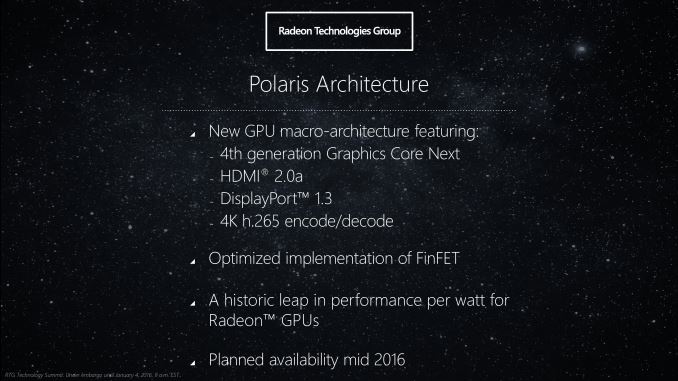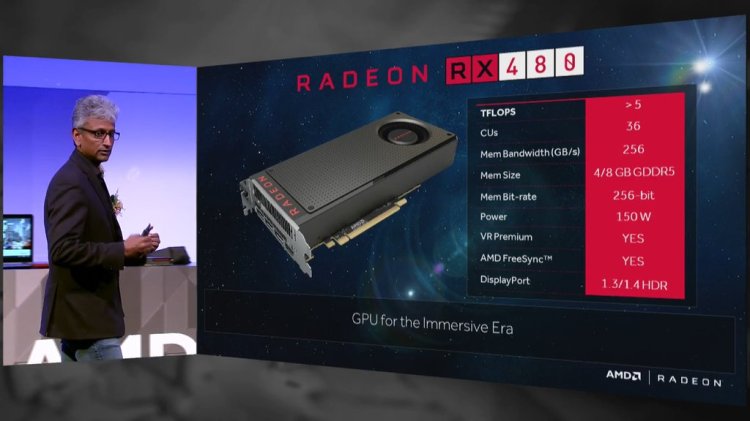AMD is about to come to the next-gen graphics-processing fight with something inexpensive.
The microprocessor company announced its Radeon RX 480 graphics card at Computex in Taipei, Taiwan today. This is AMD’s newest GPU, and it will take on Nvidia’s GeForce GTX 1080. In this battle for computer-graphics supremacy, Nvidia has more horsepower, but AMD has an advantage of its own. The RX 480 sells for $200 starting June 29 and is powerful enough to fuel the virtual reality heads from Oculus and HTC. That is a third the price of the $600 1080, and nearly half the price of the $380 GTX 1070. This card is also roughly as capable as Nvidia’s $330 R9 390 from last year thanks to the company’s new Polaris chip tech.
At $200, AMD is undercutting Nvidia’s 1070, which previously looked like one of the best entry points for anyone looking to build a new PC that is VR-capable. The Radeon team see this as a battle it can win by focusing on that price comparison when it comes to building a rig to to run the Oculus Rift and HTC Vive headsets. To emphasize this point, AMD talked extensively about VR during its presentation at Computex.
The chip company also rounded up testimonials from both HTC and Oculus for its press release to show that the major high-end PC VR vendors are on board.
“We congratulate AMD for bringing a premium VR ready GPU to market at a $199 price point,” HTC VR boss Dan O’Brien said in a canned statement.
“We’ve seen an incredible range of immersive applications and game-changing experiences that have given millions of people around the world their first taste of virtual reality,” Oculus vice president of product Nate Mitchell said. “AMD is going to help drive that adoption forward even more by bringing their high-end VR GPUs to the $199 price point.”
Moor Insights & Strategy principal analyst and president Patrick Moorhead is a fan of AMD’s VR-heavy strategy.
“What I like about the Radeon RX 480 is that it democratizes VR for the PC,” he said. “At $200, with Vive and Oculus certification, I think you’ll see many more VR solutions assorted at retail, and that is good for VR as an industry. PC VR needs volumes and the new RX 480 will help that a lot.”
Here is the breakdown of the specs of the RX 480:
- 5 TFLOPs processing power
- 2304 stream processors
- 1.08 GHz boost clock
- 8 Gbps GDDR5 memory clock
- 256-bit memory bus width
- 8GB VRAM
- 150W board power
- 14nm manufacturing process
- $200
- Launching June 29, 2016
The new Radeon runs on AMD’s Polaris architecture, which features a new, smaller process that produces less heat. By leading with a 480 that doesn’t match the 1080 or even AMD’s own 390X, the company is emphasizing the power-per-dollar ratio of its technology compared to the competition.

Above: AMD’s Polaris chips are less power hungry and produce less heat.
AMD is now aiming its resources at a mainstream audience in a way that Nvidia is not. The 1070 is an amazing card for the price, but it’s still more than the price of an Xbox One console. AMD’s inexpensive alternative seems like the obvious choice for anyone building their first gaming PC or buying a pre-built unit off the shelf at Best Buy.
VentureBeat's mission is to be a digital town square for technical decision-makers to gain knowledge about transformative enterprise technology and transact. Learn More

